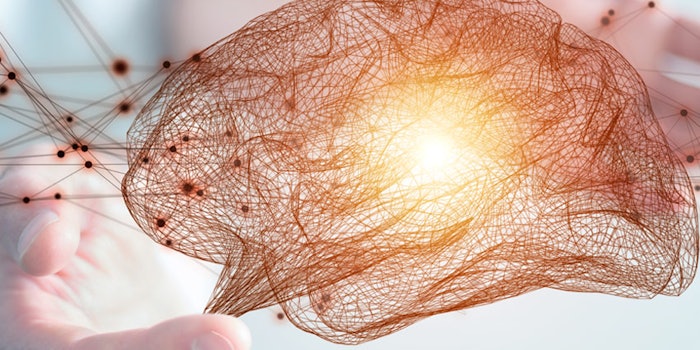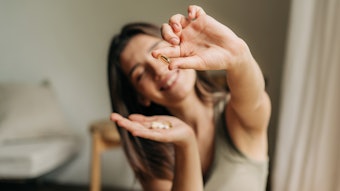
Decision making, both by ourselves and our clientele, has huge implications for our success as practitioners and business owners. It may be surprising to learn we do not have as much control over our decision-making processes as we like to think. However, neuroeconomics, the science of how brain function impacts decision-making, sales and purchasing behavior, reveals ways we can use decision-making principles to benefit both our clients, ourselves and our business practices. The first step in using this knowledge to help in client care and business development is to understand it. We can then begin to use this knowledge in empowered interactions with others.
Emotional, Not Rational
Some groups—including doctors, scientists, lawyers, business owners, managers and engineers—envision themselves to be rational and impartial decision-makers. This couldn’t be further from the truth. Research shows thateveryone arrives at decisions emotionally. Rational evaluation of situations is unable to explain many aspects of decision making.1 People preferring to think of themselves as making decisions only “rationally” have an emotional investment in thinking of themselves in this way. Therefore, these groups, like all others, are swayed by their emotions in the final analysis.
Although the accepted dogma has been that decisions are made rationally, they are actually made emotionally and then justified rationally. Two new disciplines have explored and revealed these and other principles tied to decision-making: affective neuroscience, as pioneered by Jaak Panksepp; and neuroeconomics, as pioneered by Paul Glimcher.2 These fields discovered that behavior governing decision-making is seated in deeper and more primitive areas of the brain than was once thought and not in the rational pre-frontal cortex.3
Left, Right and Whole Brain
Another misconception involves how we believe the brain works when making decisions. The concept of emotional, artistic, non-linear thinking residing in the right brain and rational, mathematical, spatial and impartial thinking belonging to the left brain has developed in recent years. Lateralization: Left Vs. Right Brain illustrates how we have come to divide the brain into left and right pieces.4 This is called lateralization, but there are truly no hard and fast rules of lateralization that impact our behavior.

The common practice of lateralizing brain function, behavior and decision-making into left and right divisions is incorrect. The actual neural connections among the neurons in the human brain viewed from the front can be seen in Neural Connections In the Brain.
Seeing real-time impulses traveling between these brain neurons looks like a mini lightning storm and illustrates how all areas of the brain communicate with each other.5 Not only is this photo beautiful, but it illustrates that there is no real left-right division. All areas of the brain are connected and communicate with other areas. There is no left brain separate from the right brain. There is only one whole brain.
Primary Human Emotions
There are seven primary human emotions that were discovered and described by Jaak Panksepp as governing behavior.6, 7 Humans also share these emotions with animals. These primary emotional reactions were developed through evolution and are physically and chemically hard-wired into the brain. All emotional reactions and behavior can be condensed into these core emotions.
- Seeking: Anticipation, curiosity, hunting behavior in animals, desire to discover and learn, vigilance
- Rage/Anger: Frustration, body surface irritation, indignation, unwanted restraint
- Fear: Pain, threat, foreboding
- Pain/Loss: Separation distress, social loss, grief, loneliness
- Play: Joy, rough-and-tumble carefree play
- Lust:Mating behavior, sexual desire
- Care: Maternal nurturing (behavior not restricted to females only)

Some of these emotions are pleasant and some very unpleasant. During all connections with others, including those in the esthetic practice, all involved parties experience one or a mix of the above emotions. Experiencing the positive emotions obviously leads to better and more pleasant outcomes than sharing the negative emotions during interaction. Those emotions resulting in avoidance behavior are fear, rage/anger and panic/grief. The emotions leading to approach, interest and further interaction are seeking/curiosity, care, lust and play. Be aware of which emotions you evoke in your client. These will determine if further positive interactions are desired such as becoming a patient/client, purchasing treatments, following instructions or divulging important clinical information that could impact treatment outcomes.
Happy Outcomes and Lasting Business Connections
Neuroeconomics reveals ways in which we can develop positive and lasting interpersonal relationships with patients, clients and business associates. Some of these are shared below.
Establish an emotional connection.8 Businesses that have an emotional connection with their customers have higher repeat sales, are more likely to be recommended and are 86% higher in sales growth than competitors. A 2003 Gallup study discovered customers found no real value in a business interaction lacking an emotional connection. Introduce yourself on the first meeting when the client walks in the door. Be friendly and openly answer questions. Dress appropriately and professionally. Tell the client briefly about yourself and the practice to increase their comfort and sense of connection with you and your business.
Be thankful. People love to be recognized and appreciated.
Engage social media. Humans are social animals and are heavily influenced by group choice. Thus, there is great power in using the internet, Facebook and other social media platforms to advertise your business and services.
Tell stories. We are all hard-wired to be receptive to compelling stories. Stories help establish emotional connections and verify that you, as a service provider, share common emotions with your clients. Shared stories hold great power in the decision-making process. A story of another client with similar concerns who benefited from a treatment (while protecting confidentiality) can greatly increase emotional comfort.
Find the positive. Find something positive in every client. The decision to consult with an esthetic professional originates from a perceived skin problem that is often associated with insecurity and negative self-concepts. It is amazing that even the most beautiful clients can be quite insecure about their appearance. While offering constructive suggestions for resolving the presenting complaint, also give feedback about a client’s esthetic strengths. This could be good bone structure, a warm smile that increases attractiveness or good skin texture.
Loss aversion. During assessments of the client’s situation, realize that people are more attracted to perceived gain than potential loss. Be supportive but still realistic in discussing possible outcomes.
REFERENCES
- G Lowenstein, S Rick and J Cohen, Neuroeconomics, Ann Rev Psychol 59 647-672 (2008)
- P Glimcher, Neuroeconomics: Decision making and the brain, Elsevier Inc.:Oxford, UK (2014)
- www.mybrainnotes.com
- K Boehm, Left brain, right brain: An outdated argument, Yale Scientific, Apr 15 (2012)
- R Lewis, Researchers map, measure brain’s neural connections, Brown University: News from Brown, Jun 1(2011)
- J Panksepp, Affective neuroscience: The foundation of human and animal emotions, Oxford Univ Press: NY (1998)
- J Panksepp and L Biven, The archaeology of mind: Neuroevolutionary origins of human emotions, Courier Westford/W. W. Norton & Co.: NY (2012)
- www.engageselling.com/articles/081113article












